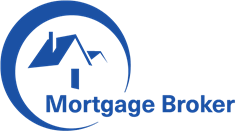How Mortgages Work
A mortgage is likely the largest and longest-term debt you will ever take on — and it’s also one of the most important purchases you’ll make in your life. Understanding how mortgages work can help you select the loan that’s right for you and avoid costly mistakes.
Buying a home requires an initial cash investment, often referred to as a down payment, and then you borrow the rest of the purchase price from a lender. In exchange, the lender holds title to your home until you pay back the loan plus interest. A lender will evaluate your ability to repay the loan, using various factors such as your credit score and debt-to-income ratio.
Mortgage loans are secured by the property being purchased, meaning if you do not make your payments, the lender can take possession of your home through a legal process called foreclosure. The most common type of mortgage is a 30-year fixed-rate mortgage, where the interest rate remains the same for the entire term of the loan. Other types of mortgages are a 15-year fixed-rate mortgage or an adjustable-rate mortgage.
Your credit score plays a big role in determining whether you’re able to qualify for a mortgage and what interest rate you will be offered. If your credit is less than stellar, consider getting started on a program designed to clean up old debt and improve your score before applying for a loan. Lenders review your income and assets to ensure that you can afford the monthly mortgage payments, including hazard insurance, homeowner’s insurance and property taxes.
The size of your down payment is an important factor in determining how much you’ll need to borrow from a lender and your final mortgage payment. A larger down payment reduces the risk to the lender and may lead to lower interest rates. Typically, lenders require a down payment of between 3 and 20 percent of the purchase price of the home. Those who don’t make a large enough down payment may need to pay for private mortgage insurance or a loan mortgage insurance premium, which also increases the borrowing costs.
You’ll also need to decide what type of occupancy you will use for the home. Owner-occupancy mortgages are most common, but there are also mortgages for second homes and rental properties. Mortgages for second homes and rental properties tend to have stricter guidelines, including higher down payment requirements and higher interest rates than for owner-occupied mortgages.
The monthly mortgage payment includes a portion of principal, a portion of interest and a portion of property taxes. During the early years of your mortgage, you’ll pay more interest than principal, but after a period of time, the opposite will be true and your principal will gradually decrease. Your lender will provide you with an amortization schedule that shows how your payment changes over time. You must also maintain homeowners insurance to protect your new property from unforeseen hazards like fire, water damage and theft.
